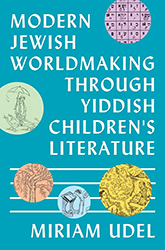Talmudic scholar Akiva ben Yosef is widely known for being one of the greatest of all rabbinic sages. But what makes his achievement so remarkable is that he did not descend from a long line of distinguished scholars. Rather, it is believed that he came from a family too poor to send him to school, spent many years herding goats, and was illiterate until the age of forty.
In this version of the classic story, the young Akiva was content with his simple life. He took pride in caring for the newborn kids, finding water for the flock and the best grass for grazing, playing his flute, and having time to think his quiet thoughts. But, as time passes, he feels more regret about his illiteracy. One day, he notices some letters carved into the stone walls of a well and wonders how they appeared and what they mean. A scholar at the Torah study hall explains that, drop by drop, “water wears away the stones.” This gives Akiva an incredible insight — if drop by drop, water can cut through stones, perhaps he can learn to read, letter by letter, word by word, and then sentence by sentence. Eventually, he becomes a renowned scholar, role model, and teacher whose influence lives on into modern times.
The parable about it never being too late to learn is clear, but this book diverges from the widely-accepted story that it was Akiva’s wife, Rachel, who was his inspiration. It is generally acknowledged that she agreed to marry him on the condition that he would learn to read and become a Torah scholar, and she supported him for the many years he was away studying.
Vali Mintzi, a graduate of the Bezalel Academy of Art and Design in Jerusalem, uses a graphic technique known as scratch art to create the richly detailed and expressive illustrations, which look like painted etchings. The art quietly enhances the story and gives an evocative feeling of time and place.
Susan Kantor was a senior writer/editor for Girl Scouts of the USA, a children’s book editor, and a past judge for the National Jewish Book Awards in the illustrated children’s book category. She is a writer and a docent at the Rubin Museum in New York City, where she leads public and private tours.





